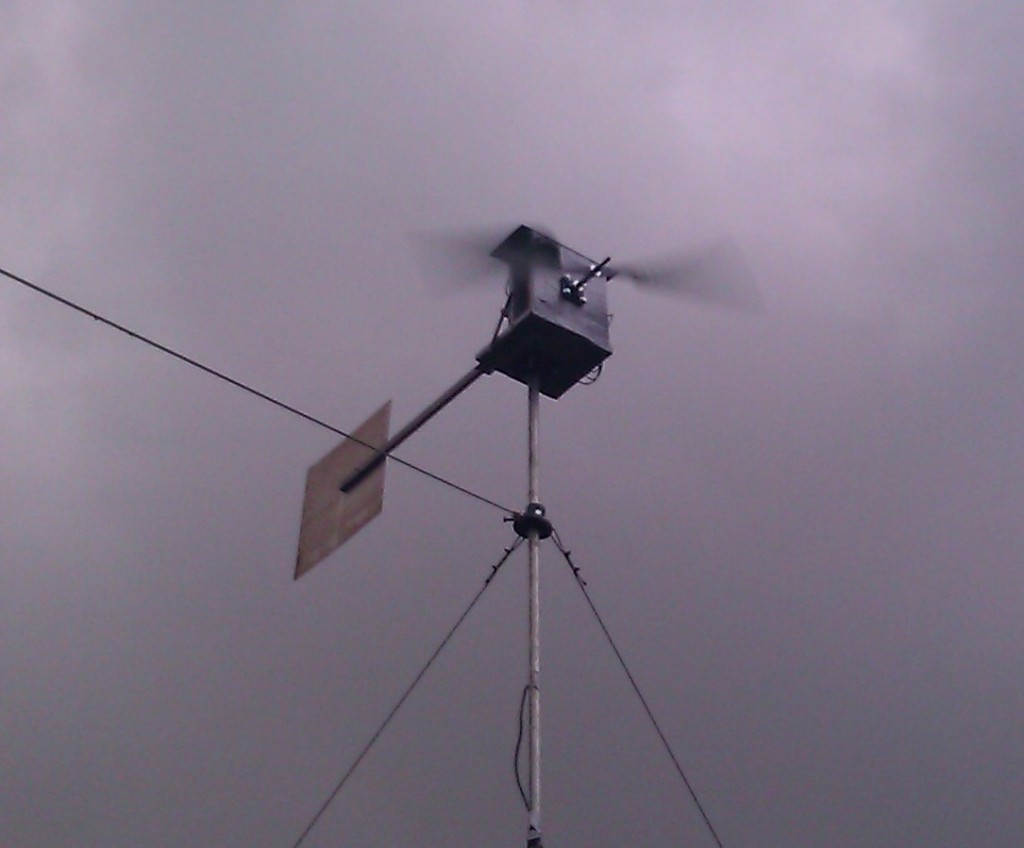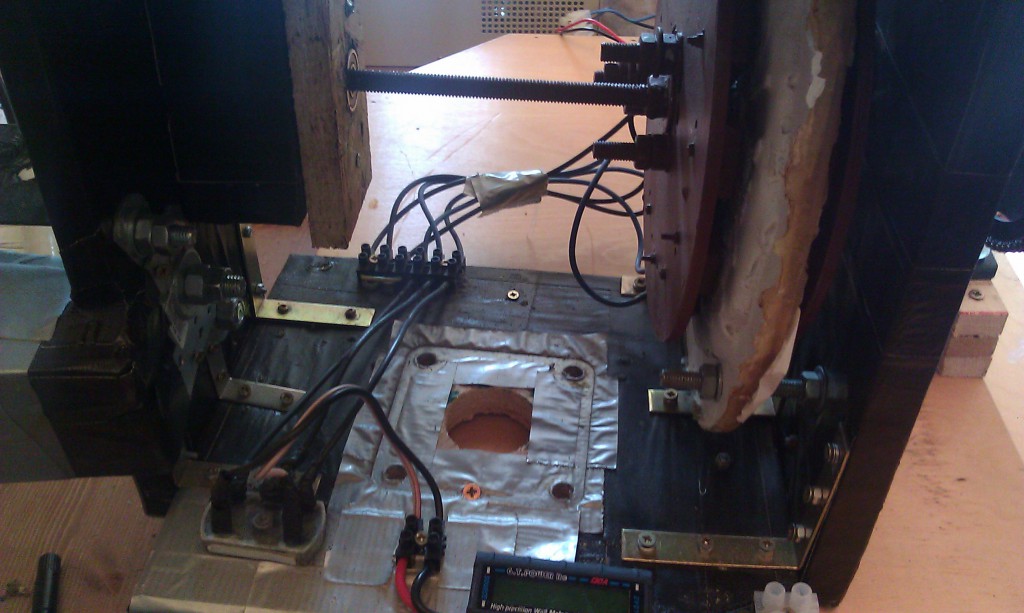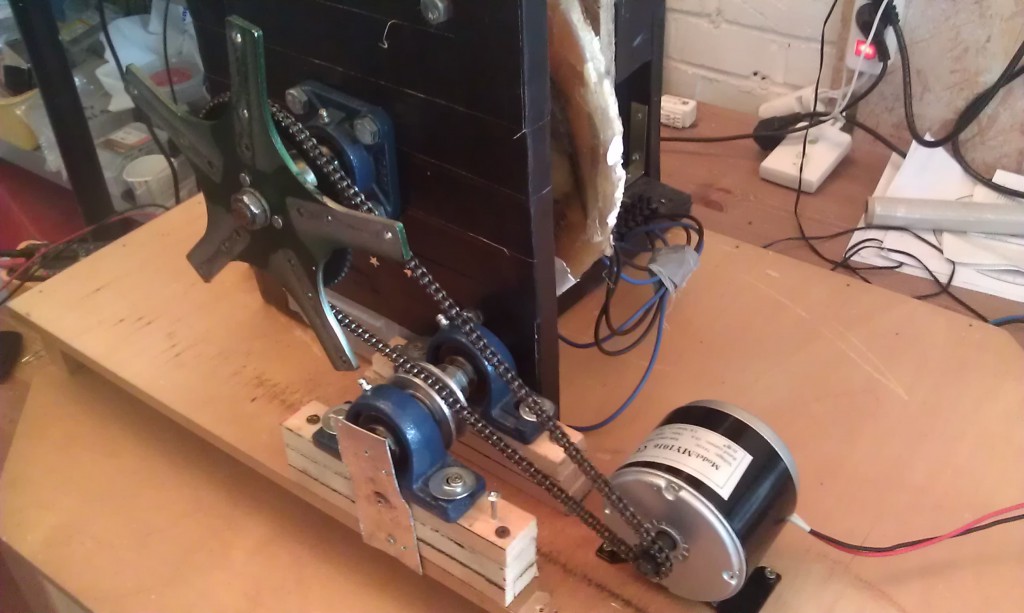One of the challenges involved in designing and developing the ‘energy harvester‘, is to work out how to design, prototype, test and evaluate software algorithms for managing power flow in the system. At first, we can use powerful lab power supplies: We have lab supplies capable of 900W, 1500W and 3000W DC power output. These can be used to validate hardware capabilities and seek out the boundaries of the hardware design. Unfortunately, they do not reflect a realistic power input behaviour of the system: Neither with regard to solar (although the difference is less important here), nor wind energy.
Why
A wind turbine is an electro-mechanical device that converts wind power into axial rotation, which drives a generator that produces electrical energy. The total efficiency of the system can be calculated (or estimated) as the relationship between available wind power and electrical output power. The influence of the mechanical factor is very important, but the problem is the non-linearity of the efficiency: wind turbine blades power conversion is dependent on wind speed, tip speed ratios and generated RPM, and more importantly the load (the extraction of power, or in other words the torque reduction) that is placed on the system. This is quite different than – for example – a DC motor, which will produce similar torque over a wide range of RPM regimes.
Optimization
The big possibility for optimization lies in whether we can let the system run in its optimal (RPM) working zone. However, this optimal working zone is quite different in light or high wind conditions. When hooking up a wind-turbine directly to a battery bank, the batteries will force the wind turbine to work under a particular load depending on the state of charge. The output voltage will be clamped to the voltage level of the batteries. These batteries (and there capability to absorb the produced energy) determine the presented resistance and load towards the turbine: This means that the wind turbine will not be working in its optimal regime all the time. One can design a wind turbine to work well in light winds, but this will have its impact in high wind conditions.
Applicability
The opposite is also true: one can design a wind turbine that works well in higher wind speeds, but it will produce almost nothing in light wind conditions… Most wind turbine designers and builders prefer to build turbines that easily start-up and do well in light to moderate wind conditions. Electronics can help to mitigate these issues and extend the optimal work range for an existing wind-turbine (design). And that is what we will try to do with our energy harvester project.
How
During development, we cannot wait for the right wind conditions to debug and check control software. Hence, we want to create those conditions on demand and thus we need to build a simulator. The very first simple simulator is extended around an existing wind turbine – loosely based on a Hugh Piggott design – we had previously built. It has a (stator-sandwiched-between-double-discs-with-permanent-magnets) axial flux generator, and we can make it run by hooking up a DC motor. It seems rather silly to use electricity to create electricity, but there you go…
In the past months, we quickly determined the need for a general purpose electrical direct current switching board where we can determine, control and steer the average current flow with PWM. Such a board can have interesting implementations. We can use it to control the DC motor in the simulator for example. Hence, we could program it to develop certain torque at certain RPMs similar to what a real wind turbine propeller would do. Then we can work on the algorithms to extract the most energy from the output of the generator.
Also, even now we already see the effect of controlling the load on the system versus letting it run freely and uncontrolled: Even in these artificial lab-simulated conditions, we can observe and conclude that lack of load and control would eventually destroy the turbine because of stress and vibrations. A wind turbine is only designed to run at a certain maximum RPM: over-speeding will destroy it. Ours is not exactly “super-built“, and thus we want to keep RPMs under 600… and avoid being hit by shrapnel.
Test runs
12V 50W halogen lamp as load
Unloaded run




Speak Your Mind